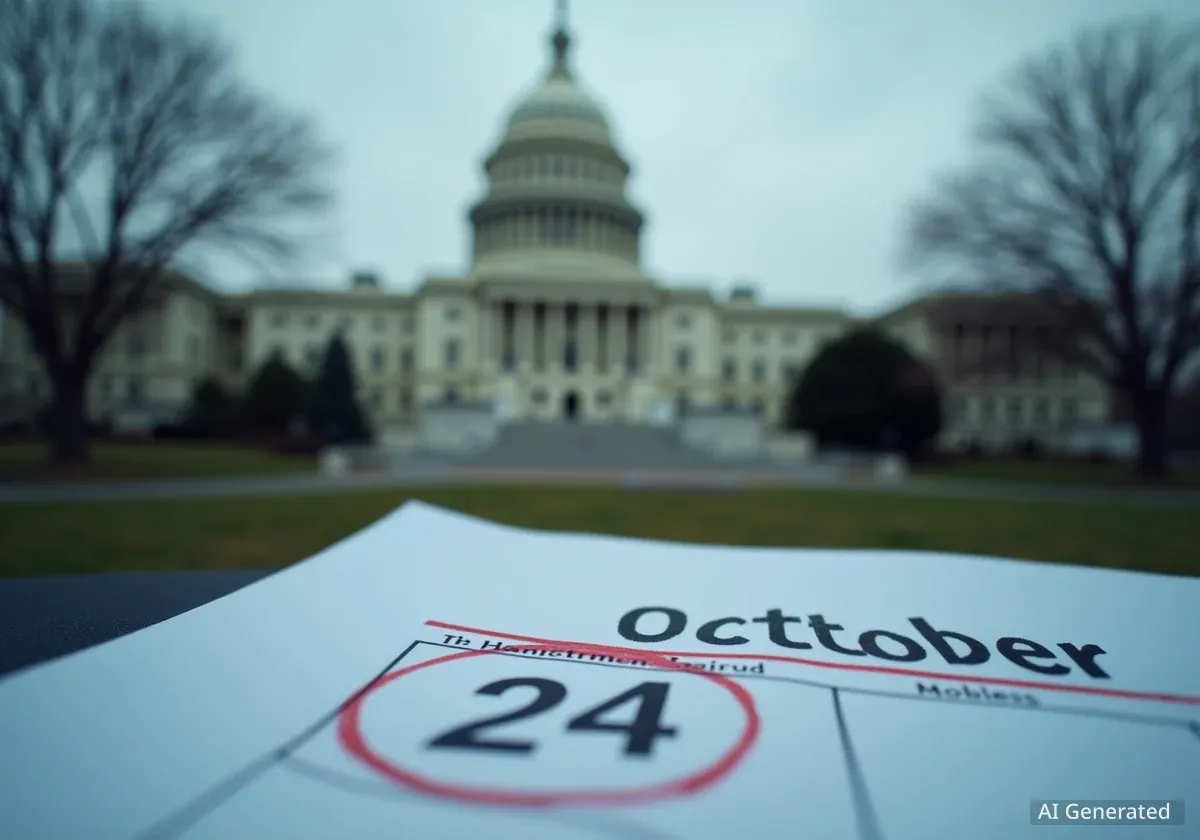A federal government shutdown has postponed the announcement for the 2026 Social Security cost-of-living adjustment (COLA), an annual increase that impacts the incomes of approximately 75 million Americans. The Social Security Administration (SSA) confirmed that the new announcement date is set for October 24, following a delay in the release of essential inflation data.
While the announcement is delayed, the SSA has assured beneficiaries that the implementation of the new benefit amount will proceed on schedule. Payments reflecting the 2026 COLA are expected to be issued in January without interruption.
Key Takeaways
- The 2026 Social Security COLA announcement has been rescheduled from October 15 to October 24 due to a government shutdown.
- The delay is caused by a postponed release of the September Consumer Price Index (CPI), the data used to calculate the COLA.
- Despite the announcement delay, beneficiaries will receive their adjusted payments on time in January 2026.
- Analysts project the 2026 COLA will be between 2.7% and 2.8%, a modest increase compared to recent years.
- A significant projected increase in Medicare Part B premiums could substantially reduce the net gain for many retirees.
Shutdown's Impact on Key Economic Data
The annual COLA is a critical mechanism designed to help Social Security and Supplemental Security Income (SSI) benefits keep pace with inflation. The adjustment is calculated based on the Consumer Price Index for Urban Wage Earners and Clerical Workers (CPI-W), a key inflation metric compiled by the Bureau of Labor Statistics.
Ordinarily, the September CPI data would be released on October 15. However, due to the lapse in federal appropriations, the data release has been pushed back. In an email to CNBC, a Social Security spokesperson clarified the new timeline.
“The Social Security Administration (SSA) will use this release to generate and announce the 2026 cost-of-living adjustment (COLA) on October 24 as well,” the spokesperson stated.
This delay highlights the procedural dependency of the SSA on other federal agencies. Without the final inflation figures for the third quarter, the precise COLA percentage cannot be finalized and announced to the public.
Beneficiaries Assured of Timely Payments
The primary concern for millions of retirees and individuals with disabilities is whether this administrative delay will affect their monthly income. The SSA has moved to quell these fears, emphasizing that the payment schedule remains intact.
According to the agency, the 2026 COLA for all 75 million beneficiaries will go into effect for January payments “without any delay due to the current government lapse in appropriation.” This separation of announcement and implementation ensures that the financial stability of recipients is not jeopardized by the shutdown's logistical hurdles.
Projecting the 2026 COLA Increase
While the official number is pending, economists and policy analysts have formulated projections based on available inflation data. The consensus estimate places the 2026 COLA in the range of 2.7% to 2.8%. This forecast is based on inflation trends observed throughout the year, pending the final September figures.
An increase of 2.8% would raise the average monthly retirement benefit by approximately $54. This would bring the average check from its current level to a new estimated total, providing a modest boost to household budgets.
This projected increase reflects a period of moderating inflation compared to the sharp price spikes seen in the immediate post-pandemic era. It represents a return to more typical annual adjustments.
Historical COLA Context
To understand the significance of the projected 2.7% to 2.8% increase, it is useful to compare it with adjustments from previous years. The 2026 figure is expected to be slightly higher than both the 2025 COLA of 2.5% and the 20-year average COLA of 2.6%, according to data from The Senior Citizens League.
However, it is substantially lower than the historic increases seen recently:
- 2023 COLA: 8.7%, the highest in over four decades.
- 2022 COLA: 5.9%, which was also a multi-decade high at the time.
Those larger adjustments were direct responses to the rapid inflation that characterized the economic recovery from the COVID-19 pandemic. The expected 2026 COLA signals a stabilization of inflationary pressures.
The Medicare Part B Factor
For most Social Security beneficiaries, the net increase in their monthly payment is not determined by the COLA alone. The cost of Medicare Part B premiums, which are typically deducted directly from Social Security benefits, plays a crucial role in their take-home amount.
Medicare Part B covers physician services, outpatient hospital services, certain home health services, durable medical equipment, and other medical and health services not covered by Medicare Part A (Hospital Insurance).
The announcement of the official 2026 Medicare Part B premium amounts has also not yet occurred. However, projections from the Medicare trustees are a cause for concern among retirees. The standard monthly premium is forecast to rise significantly.
A Potentially Large Premium Hike
According to the latest projections, the standard monthly Part B premium could increase by 11.6%. This would translate to a monthly increase of $21.50, raising the premium from $185 to $206.50 per month.
If both projections hold true—a $54 average COLA increase and a $21.50 Part B premium hike—the average retiree would see a net gain of only $32.50 per month. This illustrates how rising healthcare costs can erode the purchasing power gains intended by the COLA.
Furthermore, higher-income retirees are subject to an Income-Related Monthly Adjustment Amount (IRMAA). This means they pay a higher monthly premium for both Part B and Medicare Part D (prescription drug coverage). Any increase in the base premium will also lead to larger total premiums for those in higher income brackets, further reducing their net Social Security benefit.
What Retirees Should Expect
The key date for beneficiaries is now October 24, when the SSA is expected to announce the official COLA for 2026. The Centers for Medicare & Medicaid Services (CMS) will also announce the official Part B premiums around the same time.
Once both figures are released, retirees can calculate the real impact on their 2026 monthly income. While the delay in the announcement is a result of Washington's fiscal impasse, the core functions of the Social Security system are designed to continue, ensuring that payments remain a reliable source of income for millions of Americans.





